Traffic Decryption Explained
By default, the Firepower System cannot inspect traffic encrypted with the Secure Socket Layer (SSL) protocol or its successor, the Transport Layer Security (TLS) protocol. TLS/SSL inspection enables you to either block encrypted traffic without inspecting it, or inspect encrypted or decrypted traffic with access control. As the system handles encrypted sessions, it logs details about the traffic. The combination of inspecting encrypted traffic and analyzing encrypted session data allows greater awareness and control of the encrypted applications and traffic in your network.
TLS/SSL inspection is a policy-based feature. In the Firepower System, an access control policy is a main configuration that invokes subpolicies and other configurations, including an SSL policy. If you associate an SSL policy with access control, the system uses that SSL policy to handle encrypted sessions before it evaluates them with access control rules. If you do not configure TLS/SSL inspection, or your devices do not support it, access control rules handle all encrypted traffic.
Access control rules also handle encrypted traffic when your TLS/SSL inspection configuration allows it to pass. However, some access control rule conditions require unencrypted traffic, so encrypted traffic might match fewer rules. Also, by default, the system disables intrusion and file inspection of encrypted payloads. This helps reduce false positives and improves performance when an encrypted connection matches an access control rule that has intrusion and file inspection configured.
If the system detects a TLS/SSL handshake over a TCP connection, it determines whether it can decrypt the detected traffic. If it cannot, it applies a configured action:
-
Block the encrypted traffic
-
Block the encrypted traffic and reset the TCP connection
-
Not decrypt the encrypted traffic
If the system cannot decrypt the traffic, it blocks the traffic without further inspection, evaluates undecrypted traffic with access control; otherwise, the system decrypts it using one of the following methods:
-
Decrypt with a known private key. When an external host initiates a TLS/SSL handshake with a server on your network, the system matches the exchanged server certificate with a server certificate previously uploaded to the system. It then uses the uploaded private key to decrypt the traffic.
-
Decrypt by resigning the server certificate. When a host on your network initiates a TLS/SSL handshake with an external server, the system resigns the exchanged server certificate with a previously uploaded certificate authority (CA) certificate. It then uses the uploaded private key to decrypt the traffic.
 Note |
The Firepower System does not support mutual authentication; that is, you cannot upload a client certificate to the FMC and use it for either Decrypt - Resign or Decrypt - Known Key TLS/SSL rule actions. For more information, see Decrypt and Resign (Outgoing Traffic). and Known Key Decryption (Incoming Traffic). |
Decrypted traffic is subject to the same traffic handling and analysis as originally unencrypted traffic: network, reputation, and user-based access control; intrusion detection and prevention; Cisco Advanced Malware Protection (Cisco AMP); and discovery. If the system does not block the decrypted traffic post-analysis, it re-encrypts the traffic before passing it to the destination host.
 Note |
Set up decrypt rules only if your managed device handles encrypted traffic. Decryption rules require processing overhead that can impact performance. |
The Firepower System does not currently support TLS version 1.3 encryption or decryption. When users visit a web site that negotiates TLS 1.3 encryption, users might see errors similar to the following in their web browser:
-
ERR_SSL_PROTOCOL_ERROR
-
SEC_ERROR_BAD_SIGNATURE
-
ERR_SSL_VERSION_INTERFERENCE
For more information about how to control this behavior, contact Cisco TAC.



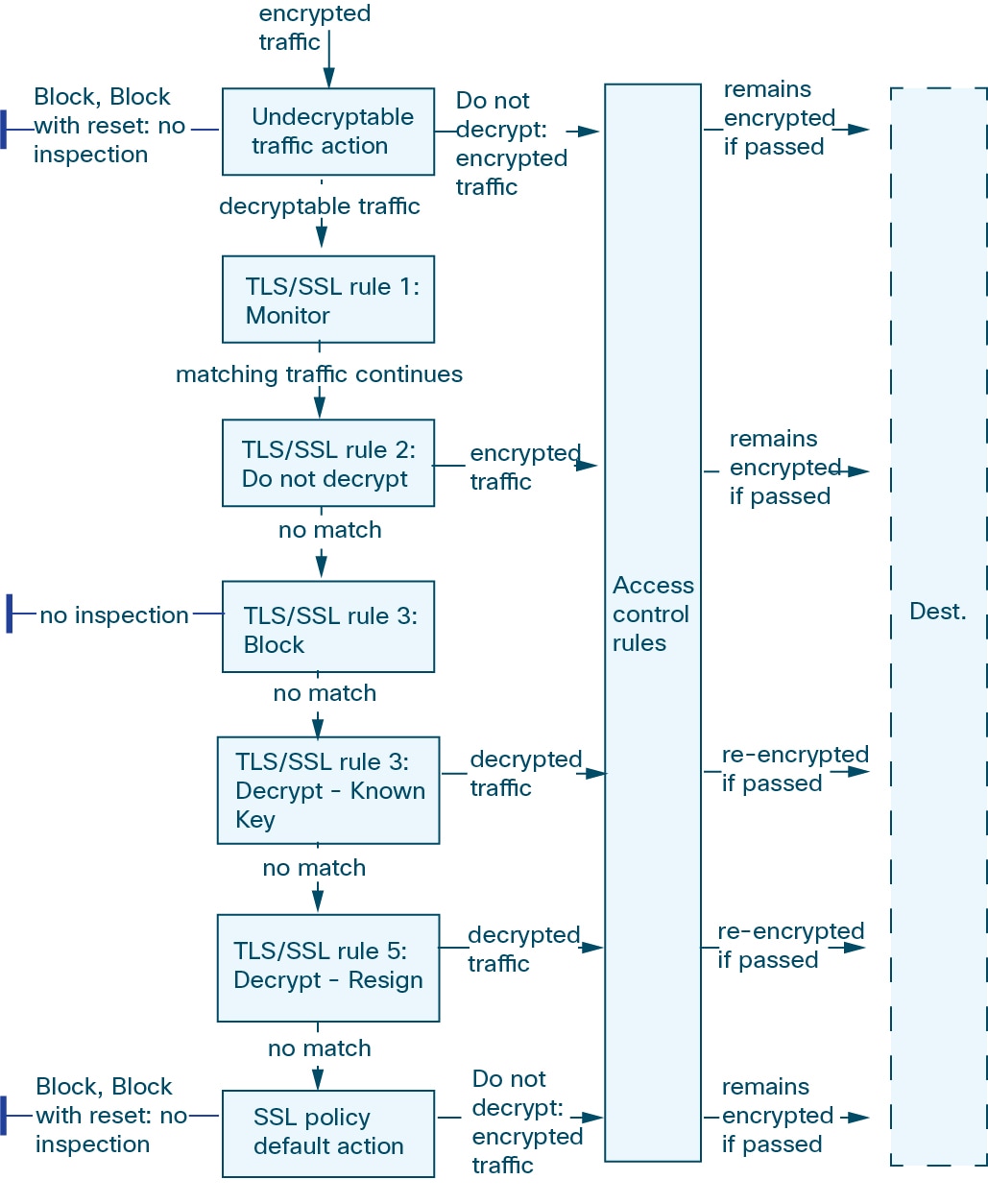
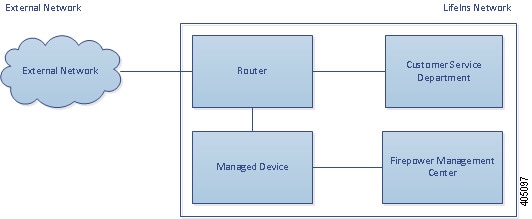
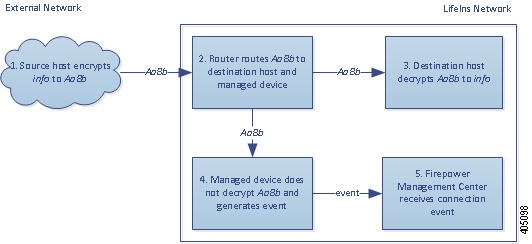
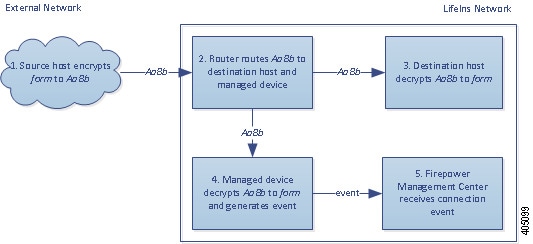
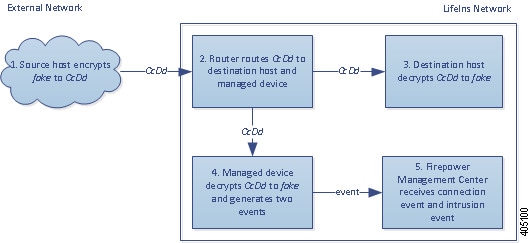
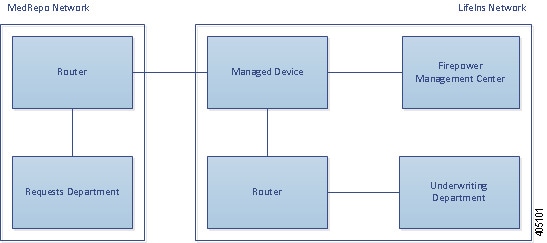
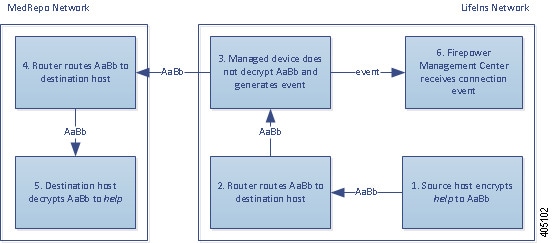

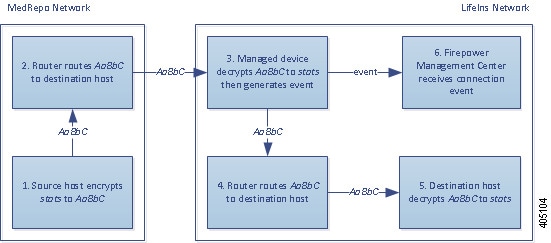



 Feedback
Feedback